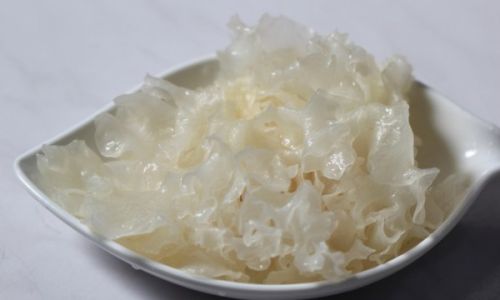Introduction

In the tapestry of seasonal fruits, few stand out as vibrantly and delicately as the loquat (Eriobotrya japonica). This golden, oval-shaped fruit, with its soft, velvety skin and juicy, aromatic flesh, is a treasure trove of flavors and nutrients. Native to China, loquats have found their way into gardens and markets worldwide, captivating taste buds with their unique blend of sweetness and tartness. But how does one truly appreciate the best of this exquisite fruit? This article delves into the myriad ways to enjoy fresh loquats, ensuring that every bite brings out their utmost deliciousness.
Understanding the Loquat: A Brief Botanical Insight
Before diving into the culinary delights of loquats, it’s essential to understand their basic characteristics. Loquats are evergreen trees or large shrubs, typically growing to heights of 10-15 feet. Their leaves are dark green, oval, and leathery, while the flowers are white, fragrant, and bloom in the late winter to early spring. The fruits, which ripen in spring and early summer, range in color from pale yellow to deep orange, depending on the variety.
Loquats are not only prized for their taste but also for their nutritional benefits. They are rich in vitamins A and C, dietary fiber, potassium, and antioxidants. These nutrients contribute to a strong immune system, healthy skin, and improved digestion. Moreover, loquats have been traditionally used in folk medicine to treat coughs and sore throats, thanks to their soothing and expectorant properties.
Selecting the Perfect Loquats
The journey to enjoying the best of fresh loquats begins with selecting the right ones. Here are some tips to ensure you pick the cream of the crop:
-
Color: Opt for fruits that are evenly colored, with a rich, vibrant hue ranging from yellow to orange. Avoid those with green patches or dull, faded colors as they may be underripe or overripe.
-
Texture: Fresh loquats should feel firm but yield slightly to gentle pressure. Overripe fruits will be too soft, potentially bruised or moldy, while underripe ones will be hard and lack flavor.
-
Aroma: A ripe loquat should emit a subtle, sweet fragrance. If there’s no scent or if it smells alcoholic or musty, the fruit is likely past its prime.
-
Size and Shape: While size can vary, choose fruits that are relatively uniform in shape, without any obvious deformities or blemishes.
-
Stem and Skin: The stem should be attached and fresh, indicating that the fruit was recently picked. The skin should be smooth and free from cracks, spots, or pests.
Storing Fresh Loquats
Once you’ve selected your perfect loquats, proper storage is crucial to preserve their freshness and flavor. Here are some guidelines:
-
At Room Temperature: If you plan to consume your loquats within a day or two, placing them on a countertop in a cool, well-ventilated area is fine. Avoid direct sunlight and areas with high humidity, which can cause the fruit to rot quickly.
-
In the Refrigerator: For longer storage (up to a week), wrap each loquat individually in paper towels and place them in an airtight container or plastic bag. Puncture a few small holes in the bag to allow for some airflow. This method helps maintain moisture levels and prevents the fruit from drying out or molding.
-
Freezing for Later Use: If you have an abundance of loquats and want to enjoy them beyond their natural season, freezing is an excellent option. Peel, pit, and halve or slice the fruits, then place them on a baking sheet lined with parchment paper. Freeze until solid, then transfer to freezer bags or containers. Frozen loquats can be used in smoothies, baked goods, or as a base for sorbets and jams.
Preparing Fresh Loquats: Tips and Techniques
Now that you have your fresh loquats, it’s time to explore the various ways to prepare and enjoy them. Here are some delicious and creative ideas:
-
Eating Them Raw: The simplest and most direct way to appreciate a loquat’s flavor is to eat it raw. Wash the fruit thoroughly under running water, pat it dry, and enjoy it as a snack. The skin is edible and adds a slight tanginess to the sweet flesh.

-
Poaching or Stewing: Gentle cooking methods like poaching or stewing enhance the natural sweetness of loquats and create a delightful sauce or syrup. To poach, simmer whole or halved fruits in a light syrup made of water and sugar (or honey) until tender. Stewing involves cooking chopped loquats with spices and a bit of liquid until they form a thick, chunky sauce.
-
Making Jam or Jelly: Loquats are perfect for preserving in the form of jam or jelly. This not only extends their shelf life but also provides a sweet, tangy spread for toast, yogurt, or pancakes. Start by pureeing cooked loquats, then cook them with sugar and lemon juice until thickened. Add pectin if desired for a firmer set.
-
Baking with Loquats: Incorporate loquats into your baking for a unique twist on classic desserts. They can be added to pies, cobblers, crumbles, and cakes, providing a moist, fruity filling. For a refreshing twist, try making a loquat sorbet or ice cream.
-
Infusing Beverages: Fresh loquats can be used to infuse water, tea, or cocktails with their delicate aroma and flavor. Simply slice or muddle the fruit and let it steep in your chosen liquid. For a more concentrated flavor, create a loquat syrup that can be mixed into drinks or used as a sweetener.
-
Salads and Salsas: Don’t overlook the potential of loquats in savory dishes. Their sweetness pairs beautifully with salty cheeses, nuts, and vinaigrettes in salads. For a tropical salsa, combine diced loquats with mango, jalapeño, red onion, cilantro, and lime juice.
-
Grilling and Roasting: Grilling or roasting loquats caramelizes their natural sugars, creating a smoky, sweet treat. Simply halve the fruits, brush with a bit of olive oil, and cook them over medium-high heat until they are soft and slightly charred. These can be served as a side dish, added to grain bowls, or topped with yogurt or ice cream.
Innovative Recipes to Try
To inspire your culinary creativity, here are a few innovative recipes featuring fresh loquats:
Loquat and Goat Cheese Tart
Ingredients:
- Fresh loquats, thinly sliced
- Goat cheese, crumbled
- Puff pastry, thawed
- Honey
- Fresh thyme leaves
- Salt and pepper
Instructions:
- Preheat your oven to 400°F (200°C). Roll out the puff pastry on a parchment-lined baking sheet.
- Spread the crumbled goat cheese evenly over the pastry, leaving a small border around the edges.
- Arrange the loquat slices in an overlapping pattern over the cheese. Drizzle with honey and sprinkle with thyme leaves, salt, and pepper.
- Bake for about 20 minutes, or until the pastry is golden and the cheese is melted and bubbly. Serve warm or at room temperature.
Loquat Lemonade
Ingredients:
- 1 cup fresh loquat puree (about 4-5 loquats)
- 1 cup freshly squeezed lemon juice
- 1 cup sugar or honey
- 4 cups cold water
- Ice cubes
- Fresh mint leaves for garnish
Instructions:
- In a blender, puree the loquats until smooth.
- In a large pitcher, combine the loquat puree, lemon juice, and sugar (or honey). Stir until the sugar is fully dissolved.
- Add the cold water and stir well. Refrigerate for at least an hour to allow the flavors to meld.
- Serve over ice, garnished with fresh mint leaves.
Loquat and Almond Cake
Ingredients:
- 1 cup all-purpose flour
- 3/4 cup granulated sugar
- 1/2 tsp baking powder
- 1/4 tsp salt
- 1/2 cup unsalted butter, softened
- 2 large eggs
- 1 tsp almond extract
- 1/2 cup chopped fresh loquats
- 1/4 cup sliced almonds
- Powdered sugar for dusting
Instructions:
- Preheat your oven to 350°F (175°C). Grease and flour an 8-inch round cake pan.
- In a medium bowl, whisk together the flour, sugar, baking powder, and salt.
- In a large bowl, cream the butter until smooth. Add the eggs one at a time, beating well after each addition. Stir in the almond extract.
- Gradually add the dry ingredients to the wet ingredients, mixing until just combined. Fold






0 comments